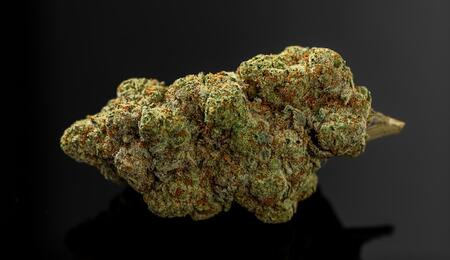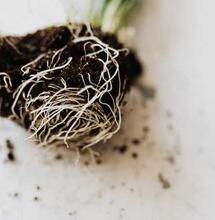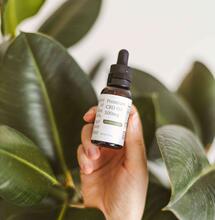Growing for terpenes

When it comes to growing for terpenes, the main characteristics a grower can control are nutrients, ultraviolet (UV) light, temperature control, harvesting schedule, the drying/curing process, and plant genetics.
Nutrients
Nutrients like methyl jasmonate can evoke a plant's systemic acquired resistance (SAR). This pushes it to increase the natural oils, such as terpenes, flavonoids and cannabinoids, as a safeguard. Another way to access this reaction is via salicylic acid. A team of botanists in Iran found that using salicylic acid as a foliar feed increases cannabinoid, flavonoid, and terpene production. When sprayed on the plant, the acid regulates the jasmonate signalling pathway that is found naturally in cannabis and causes the flavonoid and terpene synthesis to be more efficient, improving their significance by several per cent. Some products used for terpene enhancement also contain potassium (K) as a main ingredient. Potassium boosts enzyme activity, making essential oil production more efficient.
UV Light
UV light has been found to impact terpene and cannabinoid production substantially. The plant naturally protects itself from UV light by raising essential oil production. One of the most significant advances in cultivation in recent years has been the quality of LED lights. In recent years, LED companies have added UV diodes to their fixtures, which can increase cannabinoid and terpene values. A group of scientists from Columbia University grew plants on outdoor farms in California and under artificial lights using identical clones, medium, and nutrient feed.
The discovery revealed that not only were the terpene and cannabinoid levels higher in outdoor grows, but that there were also distinctive terpenes and minor cannabinoids detected in the plants that were grown outdoors. One theory is that those terpenes were higher in outdoor plants because they required extra defence from UV light.
Temperature
Generally, by lowering the temperatures at the end of your flower cycle, you can experience increased terpene production. Usually, dropping the temperature by 5-10 degrees Fahrenheit will invoke a reaction. Dropping the temperatures will also increase flavonoid production, and the plants that naturally have some purple in them will also see an increase in the amount of colour that comes through in the buds.
Harvesting, Drying and Curing
For terpene production, you should harvest slightly more on the early side. Alternatively, it would help if you gathered a bit later in the cycle for more significant THC gains. Drying and curing are just as important as growing is. When drying, you want a lower temperature environment between 45-50 degrees Fahrenheit and around 55-60% relative humidity. It's also a good idea to keep the fan leaves on and the plant as intact as possible. This allows the cannabis to dry slowly, preserving the essential oils. When storing, glass is preferable to plastic. The key to retaining terpenes is to have a whole jar. The small space between the lid and the flower will cause the terpenes to evaporate slowly. Therefore, picking a jar size that you can fill up is essential. Genetics can also play an essential role in terpene-rich flowers. Experiment with your environment, test which strains work best for you. This will allow you to grow the dankest, most potent flower that you can.
More on this topic from Soft Secrets:
Terpenes linked to better patient outcomes



.png)








